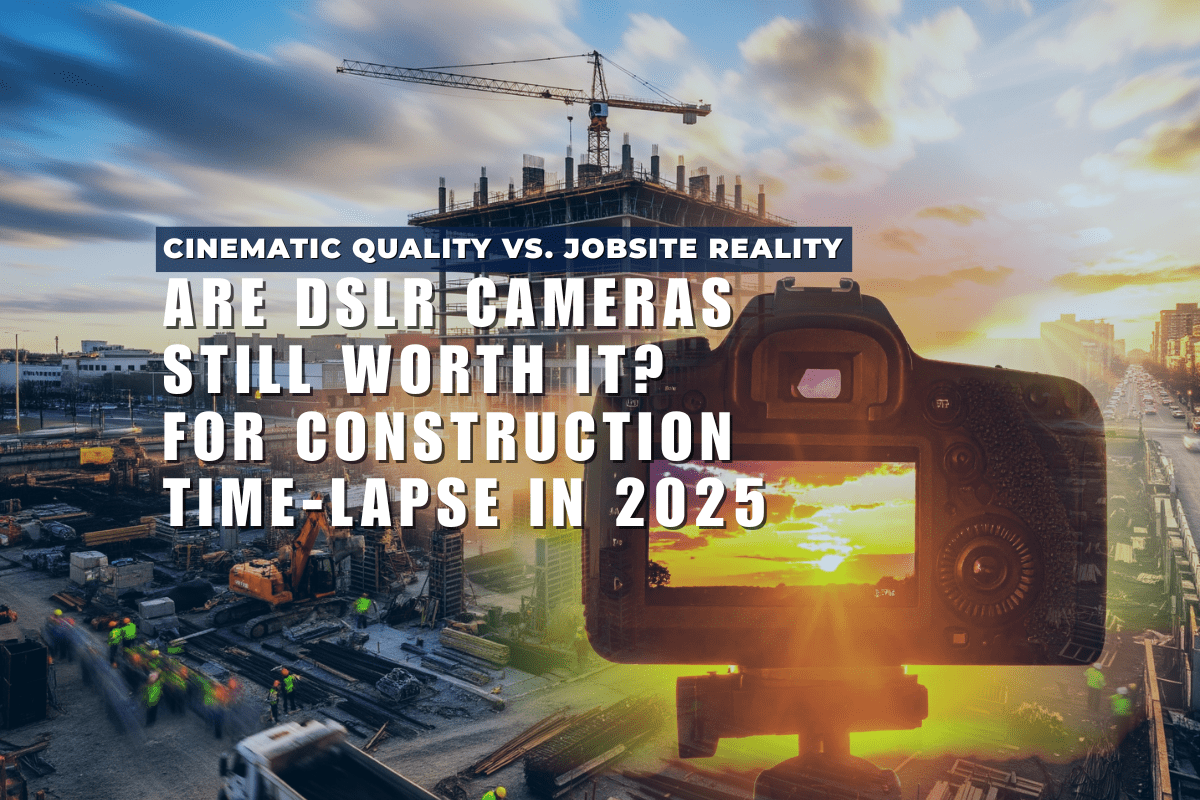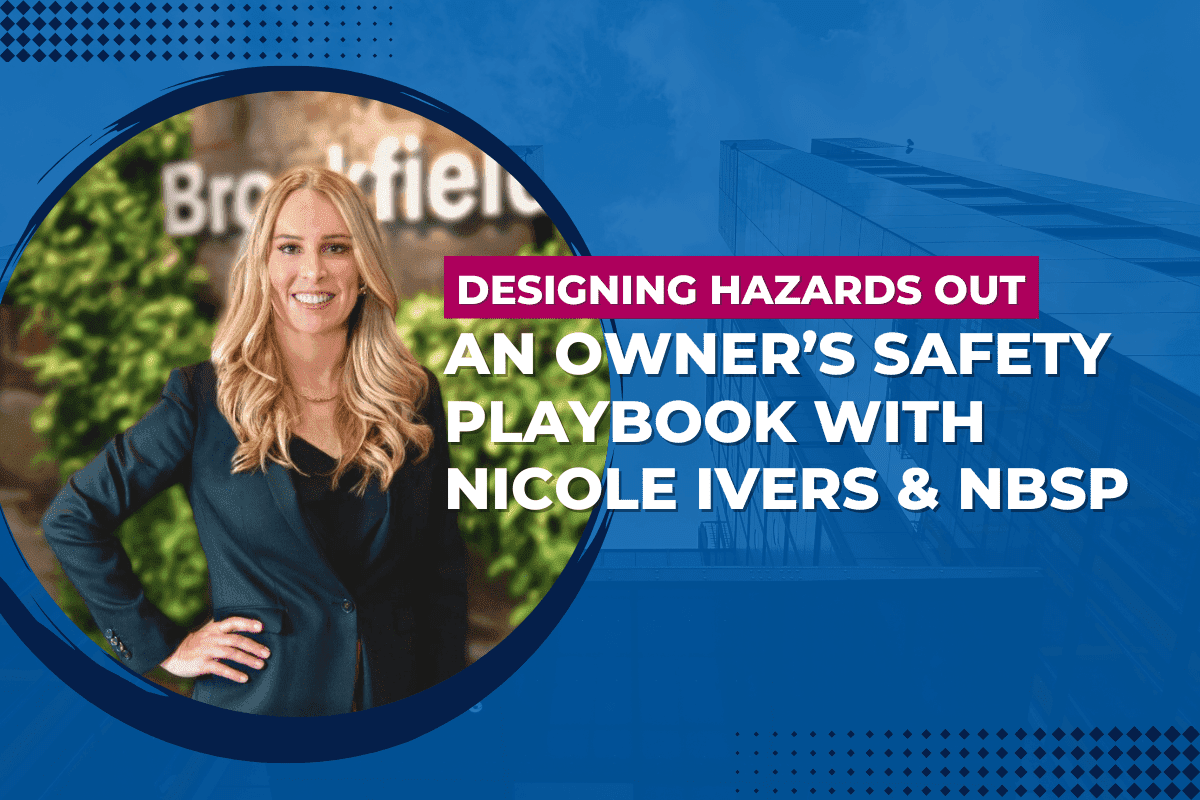Do you really need a DSLR for construction time-lapse? It’s a common question, especially for teams weighing the trade-offs between traditional photography setups and modern, purpose-built systems. DSLRs are known for their cinematic quality, but construction projects demand more than just beautiful footage.
In fact, 4K resolution is more than adequate for most documentation, especially when much of the viewing happens on screens that downscale to 1080p HD. The real value lies in ongoing site monitoring, automated documentation, and insights while the project is underway, without the unnecessary expense of overbuilt systems.
When DSLRs Still Make Sense
DSLRs earned their reputation in construction, particularly when there were few options for 4K cameras. In some ways, DSLRs remain a relevant choice.
-
Optical zoom and lens variety: Useful for capturing ultra-specific details or distant elements on large sites. That said, don’t rule out modern options like the 27MP GoPro with wide-angle lenses, where the fisheye effect can be toggled on or off for creative flexibility.
-
Premium cinematic output: Ideal for projects where polished marketing or documentary-style storytelling is the priority.
-
Controlled environments: Suited for high-budget installs where a technical team can maintain the equipment.
For professional photographers, videographers, or marketing managers working on high-end promotional projects, a DSLR rig may still deliver unique benefits.
The Trade-Offs of DSLR Systems
For most construction teams, DSLR systems bring more complexity than benefit.
-
High upfront costs: Camera body, housing, modem, power, and labor add up quickly.
-
Diminishing returns: Beyond 4K, the added resolution rarely improves project documentation or reporting, particularly when footage is viewed on downscaled screens.
-
Ongoing maintenance: Battery swaps, memory card collection, and site visits increase total cost of ownership.
In practice, the extra image quality is often unnecessary when the goal is verifying subcontractor work, tracking progress, or keeping stakeholders informed.
Modern Alternatives for Construction Time-Lapse
Purpose-built systems offer many of the benefits of DSLR without the burden of managing them.
DataLens
-
Plug-and-play, installs in minutes.
-
Optimized 4K resolution for construction documentation (more than enough for most projects).
-
Built-in cellular for automated cloud uploads.
-
Best fit: teams who want simplicity, affordability, and instant oversight.
SolarUp (GoPro/Sony-based systems)
-
Modular, with higher megapixel options and flexible mounting.
-
Close to DSLR-level cinematic output for marketing content.
-
Requires more setup than DataLens, but provides creative control.
-
Best fit: teams focused on high-resolution visuals for marketing and storytelling.
Both connect toCloudX, providing automated uploads, timestamped documentation, AI-powered progress tracking, and safety insights. That means the decision isn’t just about image quality; it’s about how much intelligence you want from your footage during construction.
Why “More Than the Final Video” Matters
DSLRs shine in the final deliverable. But construction teams increasingly need value throughout the build:
-
Remote monitoring: Access the latest site image anytime without visiting in person.
-
AI-powered jobsite intelligence: Detect risks, verify subcontractor work, and track progress automatically.
-
Automated documentation: Every image is organized and time-stamped for compliance and reporting.
With DataLens and SolarUp, the footage isn’t just saved for the end of the project; it’s working for you every day.
FAQs: DSLR vs. Modern Time-Lapse Systems
Q: Do I need a DSLR for construction time-lapse?
A: Not usually. DSLRs excel in creative, cinematic projects, but most construction teams get equal value from 4K systems with far less cost and hassle.
Q: Can GoPro, Sony, or DataLens systems match DSLR quality?
A: Yes, modular setups like SolarUp provide high megapixels, delivering results close to DSLR quality for marketing and creative content. DataLens, while optimized at 4K, is more than sufficient for documentation and internal reporting.
Q: Is 4K really enough?
A: For documentation, yes. 4K allows cropping and zooming while keeping detail manageable. Higher resolutions are most valuable for marketing-grade deliverables.
Final Takeaway
DSLRs have their place in construction time-lapse, especially for cinematic storytelling. But for most projects, purpose-built systems likeDataLens andSolarUp strike the right balance between quality, cost, and ongoing intelligence.
If you want cinematic control,chooseSolarUp.
If you want fast deployment and oversight, chooseDataLens. If you want AI-powered insights throughout your project → both deliver, thanks toCloudX.
If you want AI-powered insights throughout your project → both deliver, thanks toCloudX.
Ready to explore options?Compare DataLens and SolarUp to find the best fit for your project.



